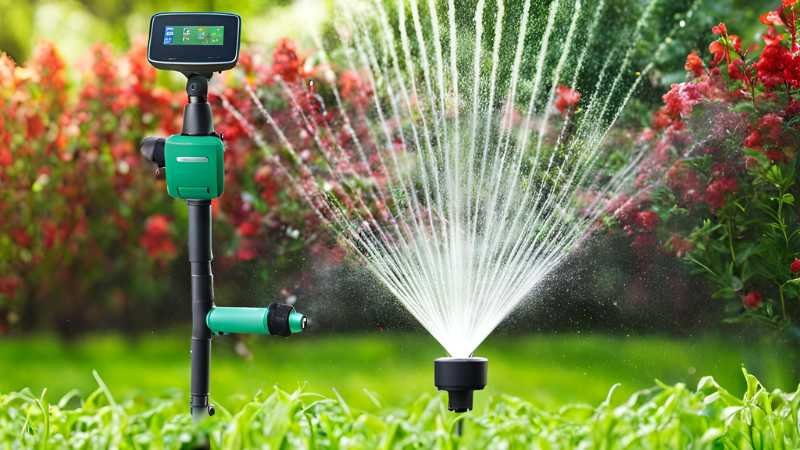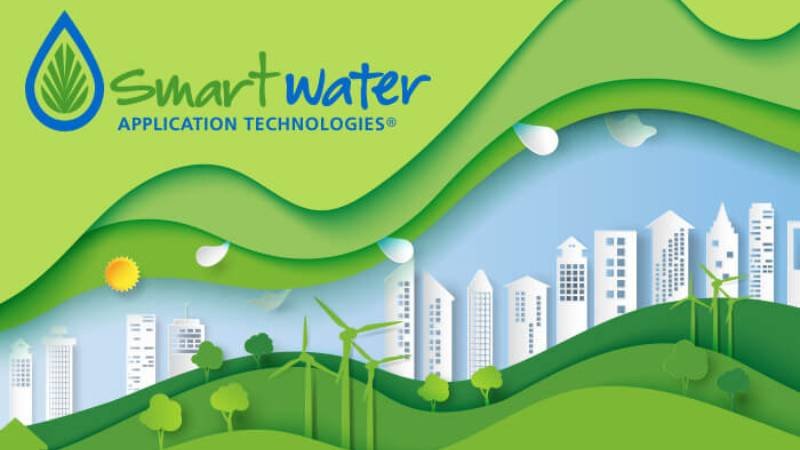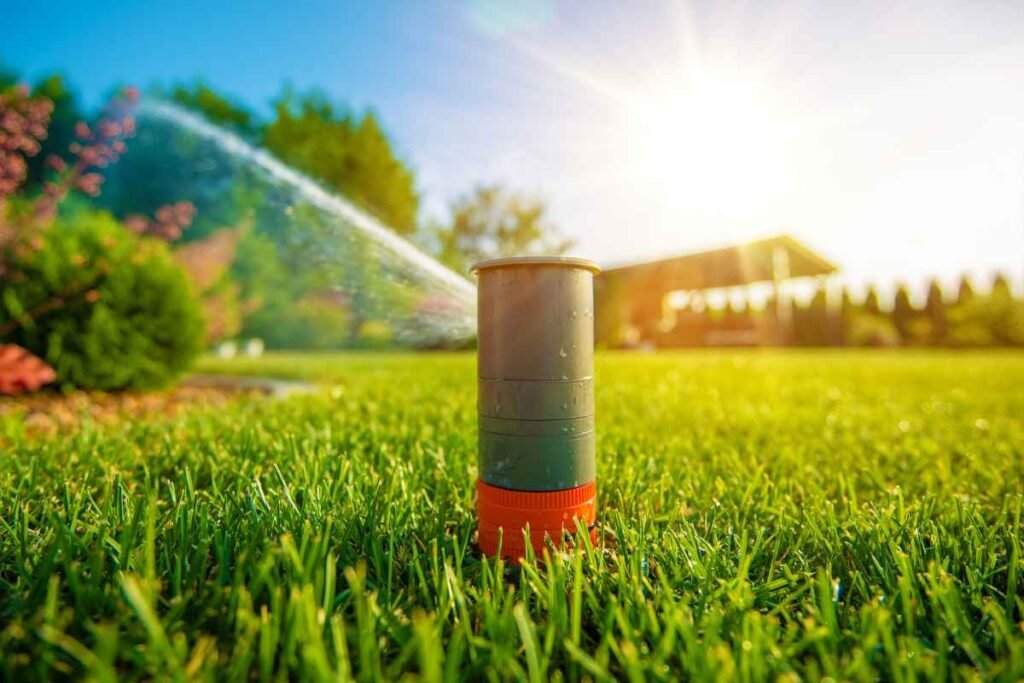Water-wise gardening, also known as xeriscaping, has become increasingly important as global water resources face mounting pressures. With climate change, population growth, and increasing urbanization, the need for sustainable water management in gardening is more critical than ever. Recent discoveries in water-wise gardening have provided innovative solutions to help gardeners conserve water while maintaining beautiful and productive gardens.
Recent Innovations in Water-Wise Gardening

Innovative Techniques and Practices
1. Advanced Irrigation Technologies
One of the most significant advancements in water-wise gardening is the development of advanced irrigation technologies. Smart irrigation systems now use sensors and weather data to optimize watering schedules. These systems adjust watering based on soil moisture levels, plant needs, and weather forecasts, reducing water wastage significantly. Drip irrigation has also been refined to deliver water directly to plant roots, minimizing evaporation and runoff.
2. Drought-Resistant Plant Varieties
Plant breeders have made strides in developing drought-resistant plant varieties. These plants can thrive in low-water conditions, making them ideal for water-wise gardens. Native plants are particularly valuable as they are adapted to local climates and require less water. New hybrids and genetically modified plants have been introduced to enhance drought resistance without sacrificing aesthetic appeal.
| Perennials | Shrubs | Ground Covers | Succulents | Trees |
| Lavender Yarrow Russian Sage Sedum Penstemon | Manzanita Rosemary California Lilac Rockrose Oleander | Ice Plant Thyme Creeping Jenny Blue Fescue Woolly Thyme | Agave Aloe Echeveria Sedum Sempervivum | Desert Willow Olive Palo Verde Western Redbud Texas Mountain Laurel |
3. Mulching and Soil Management
Recent research has highlighted the importance of soil health in water-wise gardening. Mulching, the practice of covering soil with organic or inorganic materials, helps retain moisture, reduce evaporation, and suppress weeds. Studies have shown that organic mulches, such as wood chips and straw, improve soil structure and fertility over time, enhancing water retention. Soil amendments, such as compost and biochar, have also been found to increase soil water-holding capacity.
4. Companion Planting
Companion planting is an age-old practice that has gained renewed interest for its water-saving benefits. By planting compatible species close together, gardeners can create microclimates that reduce evaporation and retain soil moisture. For example, planting tall, shade-providing plants next to shorter, sun-sensitive ones can protect the latter from excessive heat and water loss. This symbiotic relationship between plants can also improve soil health and pest resistance.
5. Greywater Reuse
The reuse of greywater from household activities, such as washing dishes and laundry, is an innovative practice that conserves freshwater. Systems are available to filter and distribute greywater safely for use in gardens. This practice not only conserves water but also reduces the demand on municipal water supplies. With proper treatment, greywater can be a valuable resource for maintaining gardens, especially in arid regions.
6. Hydrogel and Polymer Soil Additives
Hydrogel and polymer soil additives are emerging as effective tools for enhancing soil moisture retention. These substances absorb water and release it slowly, ensuring a consistent supply of moisture to plant roots. They are particularly useful in sandy or poor soils that do not retain water well. By incorporating these additives into the soil, gardeners can reduce the frequency of watering and enhance plant growth in drought-prone areas.
7. Subsurface Irrigation
Subsurface irrigation is a technique where water is delivered directly to the root zone through buried tubing or pipes. This method minimizes evaporation and runoff, ensuring that water reaches the plants’ roots efficiently. Subsurface irrigation systems can be particularly beneficial in windy or hot climates where surface watering would lead to significant water loss. This method also reduces weed growth by keeping the soil surface dry.
8. Water-Saving Lawn Alternatives
Lawns are often the largest consumers of water in residential landscapes. Replacing traditional turfgrass with water-saving alternatives, such as clover, ornamental grasses, or ground covers, can significantly reduce water usage. These alternatives require less water, fertilizer, and maintenance, making them a sustainable choice for water-wise gardening. Additionally, incorporating hardscapes like gravel, pavers, and decorative rocks can create visually appealing, low-water landscapes.
Sustainable Garden Design

1. Rain Gardens
Rain gardens have gained popularity as a sustainable garden design practice. These gardens are strategically placed to capture and absorb rainwater runoff from roofs, driveways, and other surfaces. By allowing water to infiltrate the soil, rain gardens reduce erosion, filter pollutants, and recharge groundwater supplies. Recent studies have demonstrated their effectiveness in urban environments, contributing to sustainable stormwater management.
2. Green Roofs and Walls
Green roofs and walls are innovative solutions that integrate vegetation into urban structures. These installations provide numerous benefits, including improved insulation, air quality, and biodiversity. From a water-wise perspective, green roofs and walls capture and store rainwater, reducing runoff and the need for supplemental irrigation. Advances in lightweight, modular systems have made these solutions more accessible and effective for urban environments.
3. Permeable Pavements
Permeable pavements are a sustainable solution for managing rainwater runoff in gardens and urban landscapes. These pavements allow water to pass through the surface and infiltrate the ground, reducing runoff and promoting groundwater recharge. Materials like porous concrete, permeable pavers, and gravel are used to create driveways, walkways, and patios that help manage water sustainably.
4. Bioswales
Bioswales are landscape elements designed to capture and filter stormwater runoff. They are shallow, vegetated channels that slow down water flow and allow it to soak into the ground. The vegetation in bioswales helps filter out pollutants and sediments, improving water quality. These features are particularly useful in urban and suburban areas to manage water sustainably and enhance the aesthetic appeal of landscapes.
5. Edible Landscaping
Edible landscaping integrates food-producing plants into ornamental gardens. This practice not only provides fresh produce but also promotes water efficiency by utilizing plants that are both drought-resistant and productive. Techniques such as companion planting and using perennial vegetables can enhance soil health and water retention, making the garden more resilient to drought.
6. Vertical Gardens
Vertical gardens, or living walls, maximize space and water efficiency by growing plants vertically on walls or structures. These gardens use systems that irrigate plants through drip or hydroponic methods, reducing water waste. Vertical gardens are particularly beneficial in urban environments where space is limited, providing greenery and improving air quality while conserving water.
Technological Innovations
1. Water-Saving Apps and Tools
Technology has brought new tools to the hands of gardeners, enabling better water management. Smartphone apps and online platforms now offer real-time data on weather, soil moisture, and plant health. These tools help gardeners make informed decisions about watering schedules and plant care. Some apps even provide personalized recommendations based on local climate conditions and garden specifics.
2. Smart Sensors and Automation
Smart sensors placed in the garden can monitor soil moisture, temperature, and humidity, providing precise data to guide irrigation. Automated systems can then adjust watering based on sensor readings, ensuring plants receive the right amount of water. This level of automation reduces human error and water waste, making gardens more efficient and sustainable.
3. Internet of Things (IoT) Integration
The integration of IoT devices in gardening is transforming water management. Connected devices, such as smart sprinklers and soil moisture sensors, communicate with each other to create a fully automated watering system. These IoT systems can be controlled remotely via smartphones or computers, allowing gardeners to adjust settings and monitor their gardens from anywhere. This connectivity ensures optimal water usage and quick responses to changing conditions.
4. AI-Powered Garden Assistants
Artificial Intelligence (AI) is being leveraged to create virtual garden assistants that provide tailored advice on plant care and water management. These AI-powered systems analyze data from various sensors and weather forecasts to offer personalized recommendations. For example, an AI assistant might suggest the best times to water specific plants or identify signs of water stress, helping gardeners make informed decisions to conserve water.
5. Water Recycling Systems
Innovative water recycling systems are becoming more popular in sustainable gardening. These systems capture and recycle greywater from household activities, such as washing dishes and laundry, for use in irrigation. Advanced filtration technologies ensure that the recycled water is safe for plants, reducing the need for freshwater and promoting sustainability.
6. Hydroponic and Aquaponic Systems
Hydroponic and aquaponic systems offer water-efficient alternatives to traditional soil-based gardening. Hydroponics involves growing plants in nutrient-rich water, using significantly less water than conventional methods. Aquaponics combines hydroponics with aquaculture, where fish and plants coexist in a symbiotic environment. The fish provide nutrients for the plants, while the plants help filter and clean the water, creating a closed-loop system that maximizes water efficiency.
Community and Policy Initiatives

1. Water Conservation Programs
Many communities and governments have launched water conservation programs to promote water-wise gardening. These programs often provide resources, incentives, and education to encourage residents to adopt sustainable practices. Rebates for installing water-efficient irrigation systems, workshops on xeriscaping, and public demonstration gardens are some examples of initiatives supporting water conservation.
Water Conservation Programs in the United States
- WaterSense (EPA)
- Smart Water Application Technologies (SWAT)
- California’s Save Our Water
- New York City’s Water Conservation and Reuse Program
- Colorado Water Conservation Board (CWCB)
- Texas Water Development Board (TWDB)
- Southern Nevada Water Authority (SNWA)
- Arizona Department of Water Resources (ADWR)
- Florida Water Star
- Metropolitan Water District of Southern California’s Water Conservation Programs
- Massachusetts Water Resources Authority (MWRA)
- City of Seattle’s Water Conservation Program
- Utah Division of Water Resources
- Georgia Environmental Protection Division’s Water Conservation Program
- New Mexico’s Office of the State Engineer Water Conservation Program
2. Policy and Regulation
Policymakers are increasingly recognizing the importance of water-wise gardening in sustainable urban planning. Regulations mandating the use of drought-resistant plants, limiting lawn sizes, and promoting rainwater harvesting are becoming more common. These policies aim to reduce water consumption and ensure the long-term sustainability of water resources.
3. Community Gardens
Community gardens have become a focal point for promoting water-wise practices. These shared spaces not only provide fresh produce for local residents but also serve as educational hubs for sustainable gardening techniques. Workshops, demonstrations, and collaborative projects in community gardens help spread knowledge about water conservation and efficient gardening practices.
4. Public Awareness Campaigns
Public awareness campaigns are crucial in promoting water-wise gardening. Governments and environmental organizations run campaigns to educate the public about the importance of conserving water and adopting sustainable gardening practices. These campaigns often include media outreach, educational materials, and events to engage communities and encourage behavior change.
5. Incentive Programs
Incentive programs have proven effective in encouraging residents to adopt water-saving measures. Subsidies and rebates for purchasing water-efficient appliances, installing drip irrigation systems, or converting lawns to xeriscaped gardens make it financially viable for individuals to make sustainable choices. These programs lower the barriers to entry for water-wise gardening and promote widespread adoption.
6. Collaboration with Environmental Organizations
Collaboration between governments, non-profits, and environmental organizations amplifies the impact of water conservation initiatives. Joint projects, research, and advocacy efforts can lead to innovative solutions and widespread adoption of best practices. These collaborations often result in comprehensive strategies that address local water challenges and promote sustainable gardening practices on a larger scale.
7. Educational Programs in Schools
Introducing water-wise gardening concepts in school curriculums helps instill sustainable practices from a young age. School gardens serve as living classrooms where students can learn about water conservation, plant care, and environmental stewardship. These programs not only educate the next generation but also encourage families to adopt sustainable practices at home.
8. Urban Planning and Development Policies
Integrating water-wise gardening principles into urban planning and development policies ensures that new residential and commercial projects incorporate sustainable water management practices. Requirements for green spaces, permeable pavements, and water-efficient landscaping in new developments help create resilient urban environments that can better manage water resources.
Last Words
The recent discoveries and advancements in water-wise gardening offer promising solutions to address the challenges of water scarcity. By adopting advanced irrigation technologies, drought-resistant plants, sustainable garden designs, and leveraging technological innovations, gardeners can significantly reduce their water usage while maintaining vibrant and productive gardens. Also, Green practices in lawn and garden care is becoming more popular day by day. The future of water-wise gardening looks bright as communities and policymakers promote it, making the environment more sustainable and resilient.

